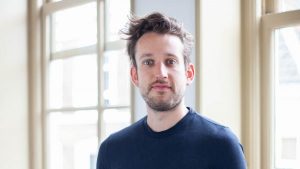With the Dutch Father’s day just behind us (last Sunday, in case you forgot), this week we dive (a little deeper into the topic of men and gender. Whenever the topic of gender equality gets brought up, the most common association is of women and their strive for equal opportunities. So much so that it is easy to forget that gender equality is not a one-way street and men and women have different issues that affect them and are worthy of (policy) attention.
That is why it’s refreshing to see that Norway (#2 most equal in the WEF’s Global Gender Gap Report) has recently launched a huge policy report on issues that (disproportionately) affect men.
The policy document (English summary on page 21) has been written by the “Men’s Equality Commission (Mannsutvalget)”, which was formed due to the “recognition that boys and men have not been sufficiently included and safeguarded in the development of Norwegian gender equality policy and in the public discourse.”
The document dives into topics such as family life, education, working life and health. Additionally it provides 35 concrete policy recommendations to improve gender equality such as…
- more equal parental leave policies after having a child
- the introduction of play-based learning in kindergarten
- flexible (later) entry to school for boys to align better with their biological/cognitive development
- and much more…
This report comes out as more voices are slowly emerging about the exclusion of boys and men in gender policy. One of those voices is Richard Reeves, author of the book Of Boys and Men. The book dives into the structural challenges that face boys and men along with proposed solutions without descending into culture wars and zero-sum thinking (article from the author).
One of his main arguments is the limitation in regarding gender diversity as a one-way stream. Above mentioned WEF report, for example, even has this one-sidedness embedded in its methodology, according to Reeves:
“To compile the report, a gender equality score is calculated for each nation, between 0 (complete inequality) and 1 (complete equality). The score is based on fourteen variables across four domains—economics, education, health, and politics. (Each variable in the index is also calculated on a 0–1 range.)
(…)
But crucially, no account is taken of domains where women are doing better than men. As WEF’s number-crunchers explain, “The index assigns the same score to a country that has reached parity between women and men and one where women have surpassed men.” Across the fourteen measures, U.S. women are now doing as well or better than men on six. In higher education, for example, the actual gender parity score is 1.36, reflecting the large lead that women have over men on this front. But the number factored into the index to generate the overall U.S. score is not 1.36. It is 1. The idea that gender inequality only counts in one direction is baked into WEF’s methodology.”
(…)
“The point here is not to devalue the work done by the Gender Policy Council, or WEF, or any of the other organizations aiming to improve the position of women. Closing the gaps where girls and women are behind remains an important policy goal. But given the huge progress made by women in recent decades and the significant challenges now faced by many boys and men, it makes no sense to treat gender inequality as a one-way street. On a practical level, it leads to a lack of policy attention to the problems of boys and men. But ignoring glaring gender gaps that run in the other direction, I believe, also robs these efforts of the moral force of egalitarianism.”
The first signs of serious policy attention towards gender diversity for men along with advocates for the topic signal an interesting shift towards accommodating new forms of masculinity. A masculinity that on the one hand nurtures and accommodates differences (like sorts of play and the pace of development) but on the other hand allows for more egalitarian roles in society (like paternity leave).

Author
Douwe Knijff
Share the signal.












